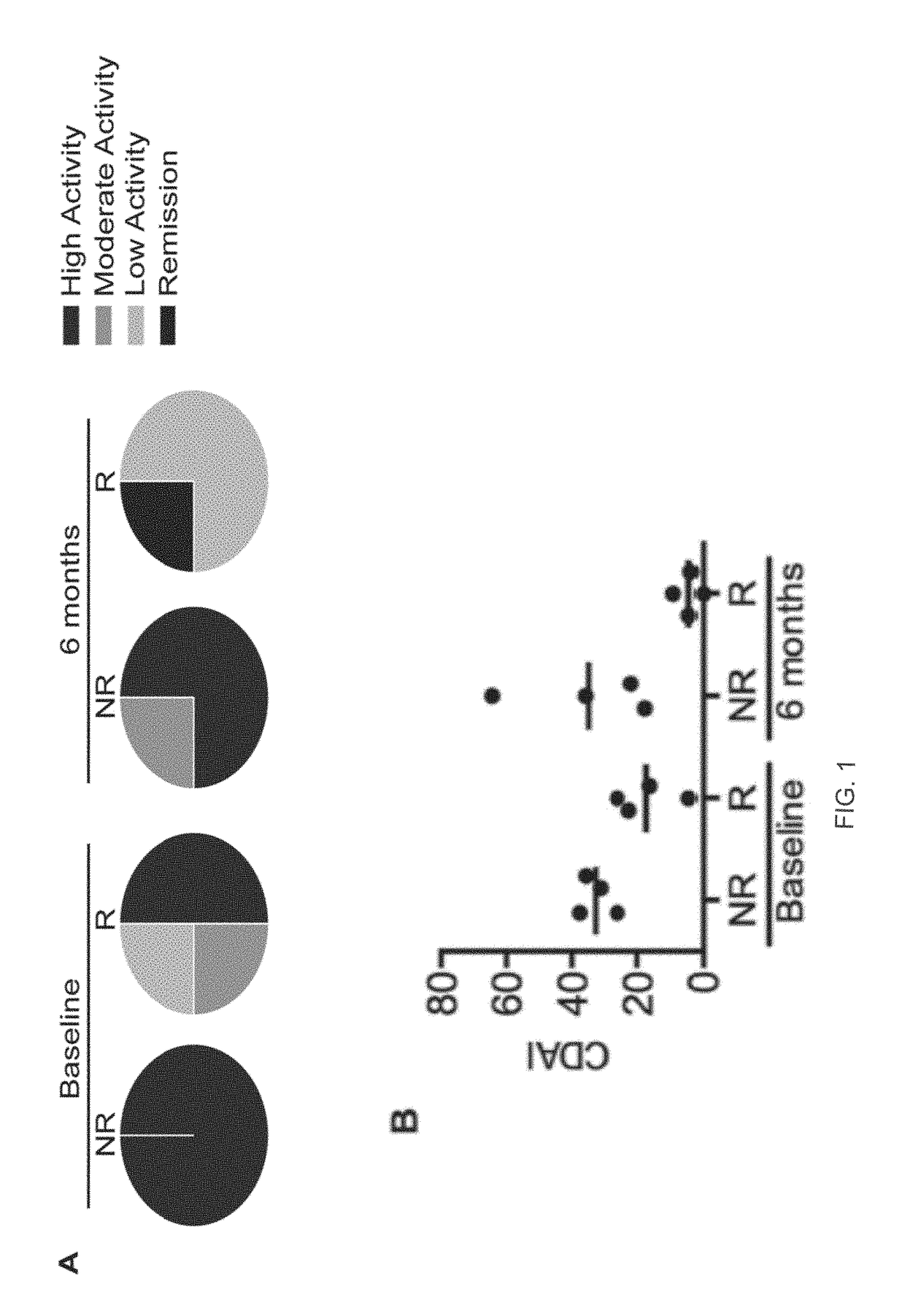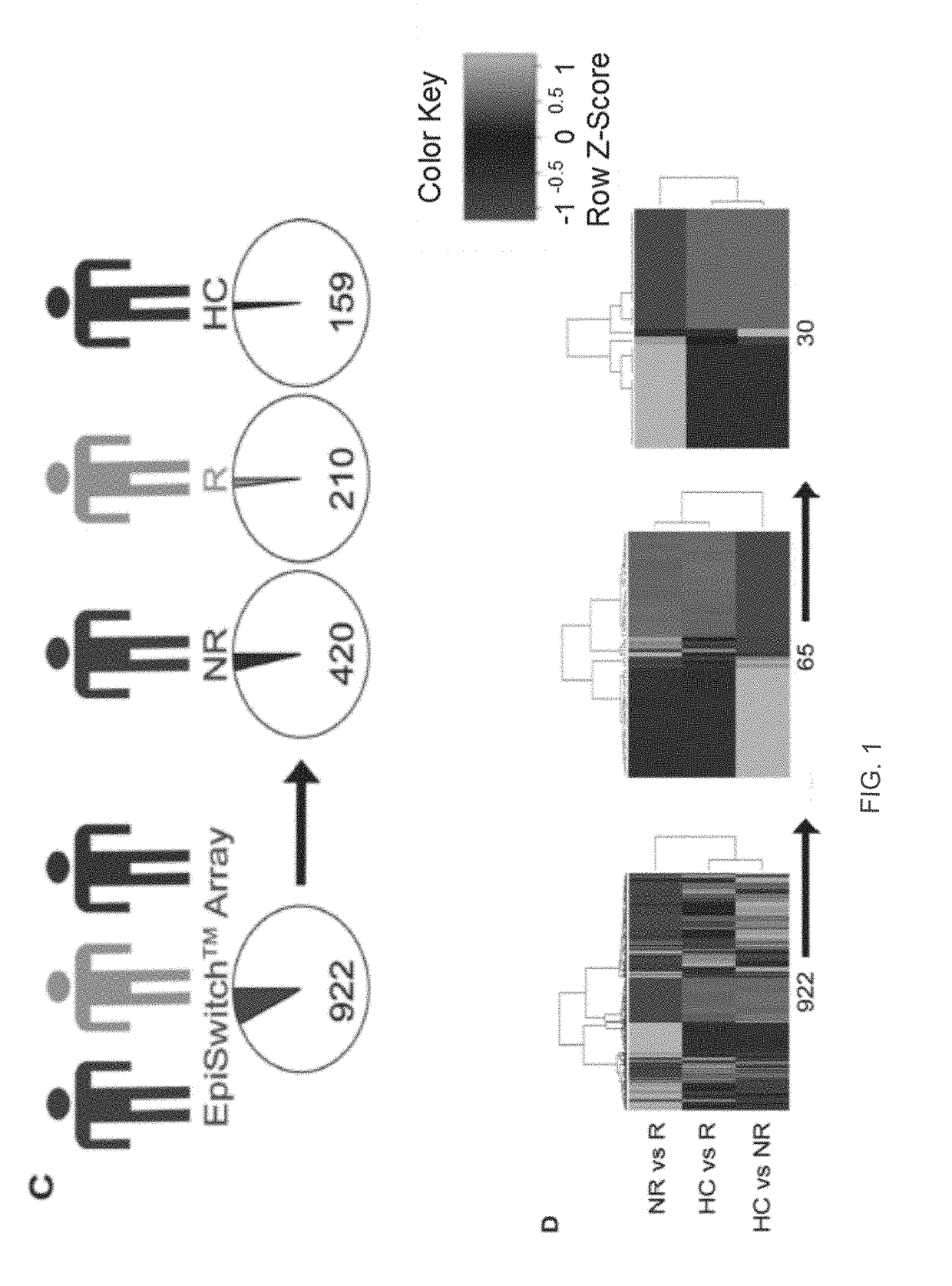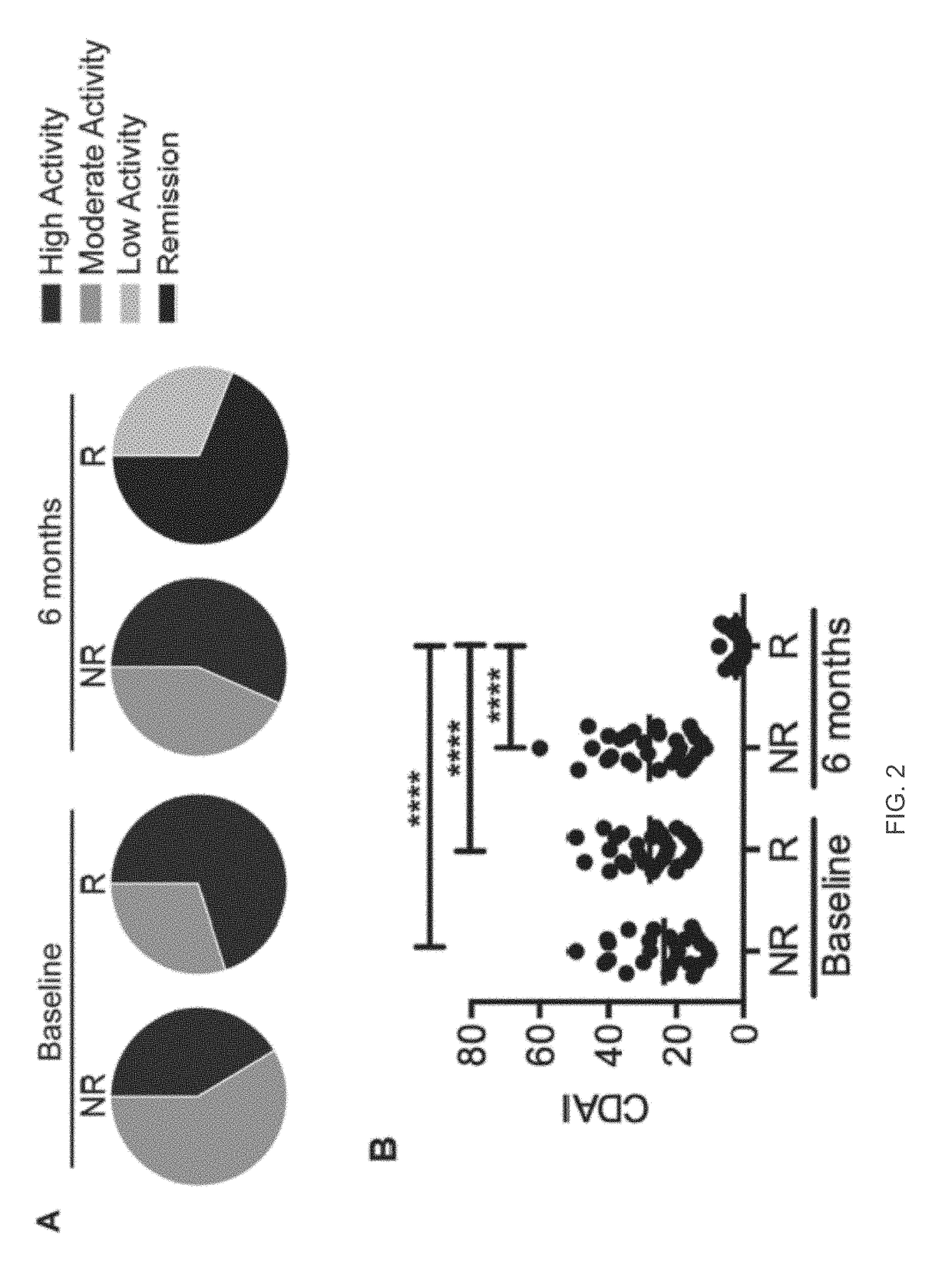Epigenetic chromosome interactions
- Summary
- Abstract
- Description
- Claims
- Application Information
AI Technical Summary
Benefits of technology
Problems solved by technology
Method used
Image
Examples
example 1 — conclusion
Example 1—Conclusion
[0257]In conclusion, our study of the epigenetic profile classification of DMARD naïve ERA patients on the basis of prospective clinical assessment for R / NR has identified a consistent epigenetic signature, which discriminates an epigenetic state that is conducive and non-conducive to MTX response. This is to our knowledge, the first example of a stable and selectively differentiating blood based epigenetic biomarker in early RA patients that appears disease related (versus healthy controls) and that can predict non-responsiveness to first-line MTX therapy. This model offers direct and practical benefits with a validated classifier based on 5 conditional CCS and their detection by the industrial 150-13485 EpiSwitch™ platform, which has the potential to be routinely available in the near future within clinical practice. Importantly, by adopting this predictive signature it should be possible to stratify MTX naïve ERA patients into R and NR cohorts. This offers the...
example 1
al Methods and Packages
[0261]GraphPad Prism and SPSS were used for all statistical analyses of clinical data. The chi-square test and Fisher's exact test (for categorical variables), the t-test for independent samples (for continuous normally distributed variables), and the Mann-Whitney U test (for continuous variables without normal distribution) were used to identify differences. The level of statistical significance was set at 0.05, and all tests were 2-sided. R (and appropriate packages) was used for evaluation of EpiSwitch™ data. This included Stats package for Chi-square test and GLM (logit), ROCR package for ROC curves from WEKA odds probabilities, gplot & stats package in R for Heatmaps. FactorMiner package was used for PCA and Factor plots. Weka was used for Attribute Reduction, data randomisation and re-sampling, Logistic Model Classifier, AUC calculations and model accuracy calculations.
REFERENCES FOR EXAMPLE A AND FOR ALL OF THE PRESENT PATENT SPECIFICATION
[0262]1. Liao,...
example 1a
Results
[0287]Table 7 (part a and continuation part b) hereinafter discloses Probe and Loci data for RA-MTX—DNA probes stratifying between responders (R) and non-responders (NR). B=B-statistic (lods or B), which is the log-odds that that gene is differentially expressed. FC is the non-log Fold Change. FC_1 is the non-log Fold Change centred around zero. It is seen that Table 7a includes the sequences of 25 refined preferable DNA probes (60mers) for identifying MTX responders (MTX-R), and of 24 (or 25) refined preferable DNA probes (60mers) for identifying MTX non-responders (MTX-NR), from the hypergeometric analysis. Table 9 (parts a, b and c) hereinafter discloses enriched data from a hypergeometric analysis of RA patients vs. healthy controls (HC), and does not relate to the MTX response in RA patients.
TABLE 7aExample 1A. Probe and Loci data for RA-MTX −probes stratifying between responders andnon-responders.LoopFCFC_1LSdetected60 mer0.5774097−1.7318725−1MTX-RTGTTTTTTGGCTGCATAAATGT...
PUM
| Property | Measurement | Unit |
|---|---|---|
| Fraction | aaaaa | aaaaa |
| Fraction | aaaaa | aaaaa |
| Fraction | aaaaa | aaaaa |
Abstract
Description
Claims
Application Information
 Login to View More
Login to View More - R&D
- Intellectual Property
- Life Sciences
- Materials
- Tech Scout
- Unparalleled Data Quality
- Higher Quality Content
- 60% Fewer Hallucinations
Browse by: Latest US Patents, China's latest patents, Technical Efficacy Thesaurus, Application Domain, Technology Topic, Popular Technical Reports.
© 2025 PatSnap. All rights reserved.Legal|Privacy policy|Modern Slavery Act Transparency Statement|Sitemap|About US| Contact US: help@patsnap.com



